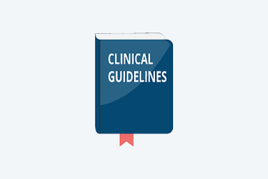Skin cancer
Incidence rates
Skin cancer is the most common cancer in the United States. (1,2)
Current estimates are that one in five Americans will develop skin cancer in their lifetime. (3)
It is estimated that approximately 9,500 people in the U.S. are diagnosed with skin cancer every day. (4-6)
It is estimated that the overall incidence of BCC increased by 145% between 1976-1984 and 2000-2010, and the overall incidence of SCC increased 263% over that same period. (7)
Women had a greater increase in incidence than men for both types of NMSC. (7)
More than 1 million Americans are living with melanoma. (8)
It is estimated that 212,200 new cases of melanoma, 107,240 noninvasive (in situ) and 104,960 invasive, will be diagnosed in the U.S. in 2025. (6)
Invasive melanoma is projected to be the fifth most commonly diagnosed cancer for both men (60,550 cases) and women (44,410 cases) in 2025. (6,9)
Melanoma rates in the United States have been rising rapidly over the past 30 years — doubling from 1982 to 2011 — but trends within the past decade vary by age. (1,6,10,11) There has been a 31.5% increase between 2011 and 2019. (12)
Since the early 2000’s invasive melanoma incidence rates have stabilized in women younger than 50 and steadily increased by 3% per year in women 50 or older. In men younger than 50, rates have declined by 1% per year and stabilized in men 50 or older. Overall, incidence rates of invasive melanoma are higher in women compared to men who are younger than 50. In contrast, men who are 50 or older have a higher rate of invasive melanoma compared to women of the same age group. This difference may be due to historical occupational and recreational exposure to UV radiation as well as trends in indoor tanning use by young women. (6)
White populations have higher rates of melanoma compared to other races.
Lifetime risk of getting melanoma is about 3% for white people (1 in 33), 0.1% (1 in 1,000) for Black people, and 0.5% (1 in 200) for Hispanic people. (13) There is a melanoma incidence of 1.3 per 100,000 for Asian/Pacific Islanders and 10.7 per 100,000 for Native Americans. (14-16)
Skin cancer can affect anyone, regardless of skin color.
The incidence of melanoma among non-Hispanic White individuals is almost 30 times higher than that among non-Hispanic Black or Asian/Pacific Islander individuals. (13,14)
Skin cancer in patients with darker skin tones is often diagnosed in its later stages, when it’s more difficult to treat. (17-21)
Research has shown that patients with darker skin tones are less likely than patients with lighter skin tones to survive melanoma. (19-22)
Twenty-two percent of melanoma cases in African American patients are diagnosed when the cancer has spread to nearby lymph nodes, while 14% are diagnosed when the cancer has spread to distant lymph nodes and other organs. (23)
People with darker skin tones are prone to skin cancer in areas that aren’t commonly exposed to the sun, like the palms of the hands, the soles of the feet, the groin and the inside of the mouth. They also may develop melanoma under their nails. (21,24)
It is estimated that melanoma will affect 1 in 29 men and 1 in 40 women in their lifetime. (6)
Invasive melanoma rates among individuals younger than age 50 have stabilized in women and declined by about 1% per year in men since the early 2000s. (6)
In adults 50 or older, the rates continue to increase in women by about 3% per year but have stabilized in men in recent years. (6)
Survival rates
Basal cell and squamous cell carcinomas, the two most common forms of skin cancer, are highly treatable if detected early and treated properly. (5,6)
The five-year survival rate for people whose melanoma is detected and treated before it spreads to the lymph nodes is 99%. (6)
The five-year survival rate for melanoma that spreads to nearby lymph nodes is 75%. The five-year survival rate for melanoma that spreads to distant lymph nodes and other organs is 35%. (6)
Mortality rates
The vast majority of skin cancer deaths are from melanoma. (6)
Nearly 20 Americans die from melanoma every day. In 2025, it is estimated that 8,430 deaths will be attributed to melanoma — 5,470 men and 2,960 women. (6)
Research indicates that men with melanoma generally have lower survival rates than women with melanoma. (6,8,25)
Overall melanoma death rates drastically declined from 2014 through 2022 by nearly 4%. (6)
Risk factors
Excess exposure to UV radiation from sunlight or use of indoor tanning also increases risk for all skin cancer types, as does a personal history of the disease. (6)
The majority of melanoma cases are attributable to UV exposure. (26-29)
Research suggests that regular sunscreen use may reduce risk of melanoma. (29-32)
Higher melanoma rates among men may be due in part to lower rates of sun protection. (1)
Men are also less likely than women to examine their own skin or go to a dermatologist for skin examination. (33)
Sunburns during childhood or adolescence can increase the odds of developing melanoma later in life. (34)
Experiencing five or more blistering sunburns between ages 15 and 20 increases one’s melanoma risk by 80% and nonmelanoma skin cancer risk by 68%. (35)
Exposure to tanning beds increases the risk of melanoma, including early onset melanoma. (26,36)
Women younger than 30 are six times more likely to develop melanoma if they tan indoors. (37)
The younger a person is when they use tanning beds and the more annual use of indoor tanning they have increases their risk of the development of melanoma and NMSC. (26)
Risk factors for all types of skin cancer include skin that burns easily; blonde or red hair; a history of excessive sun exposure, including sunburns; tanning bed use; a weakened immune system; and a history of skin cancer. (6)
People with more than 50 moles, atypical moles or large moles are at an increased risk of developing melanoma, as are sun-sensitive individuals (e.g., those who sunburn easily, or have natural blonde or red hair), individuals who have received a blood or marrow transplant, individuals who were diagnosed with cancer as a child, and those with a personal or family history of melanoma. (6,38,39)
Melanoma survivors have an approximately eight-fold increased risk of developing another melanoma compared to the general population. (40)
Men and women with a history of nonmelanoma skin cancer are at a higher risk of developing melanoma than people without a nonmelanoma skin cancer history. (41,42)
White individuals who have had more than one melanoma have an increased risk of developing both subsequent melanomas and other cancers, including those of the breast, prostate, and thyroid. (43)
Prevention and detection
Because exposure to UV light is the most preventable risk factor for all skin cancers, the American Academy of Dermatology encourages everyone to stay out of indoor tanning beds and protect their skin outdoors by seeking shade, wearing protective clothing — including a long-sleeved shirt, pants, a wide-brimmed hat and sunglasses with UV protection — and applying a broad-spectrum, water-resistant sunscreen with an SPF of 30 or higher to all skin not covered by clothing. (27-29,44)
At a minimum, most adults need about 1 ounce of sunscreen — roughly the amount to fill a shot glass — to fully cover skin not covered by clothing. Depending on your body size, you may need more sunscreen to protect your exposed skin from the sun’s harmful rays.
When applying sunscreen to your face, use at least 1 teaspoon (about the amount needed to cover the length of your index and middle fingers).
For more effective sun protection, select clothing with an ultraviolet protection factor (UPF) number on the label.
Because severe sunburns during childhood and adolescence may increase one’s risk of melanoma, children should be especially protected from the sun. (6)
Skin cancer warning signs include changes in size, shape, or color of a mole or other skin lesion, the appearance of a new growth on the skin, or a sore that doesn't heal. If you notice any spots on your skin that are different from the others, or anything changing, itching or bleeding, the American Academy of Dermatology recommends that you make an appointment with a board-certified dermatologist.
While about 20-30% of melanomas develop in existing moles, 70-80% arise on seemingly normal skin. (41-46)
The American Academy of Dermatology encourages everyone to perform regular skin self-exams to check for signs of skin cancer.
About half of melanomas are self-detected. (45-49)
Regular skin self-exams are important for people who are at higher risk of skin cancer, such as people with a personal and/or family history of skin cancer. (50)
A dermatologist can make individual recommendations as to how often a person needs a skin exam from a doctor based on individual risk factors, including skin type, history of sun exposure and family history.
Last updated: 6/20/25
References
Guy GP, Jr., Thomas CC, Thompson T, et al. Vital signs: melanoma incidence and mortality trends and projections - United States, 1982-2030. MMWR Morb Mortal Wkly Rep. 2015;64(21):591-596.
Guy GP, Jr., Machlin SR, Ekwueme DU, Yabroff KR. Prevalence and costs of skin cancer treatment in the U.S., 2002-2006 and 2007-2011. Am J Prev Med. 2015;48(2):183-187.
Stern RS. Prevalence of a history of skin cancer in 2007: results of an incidence-based model. Arch Dermatol. 2010;146(3):279-282.
Rogers HW, Weinstock MA, Feldman SR, Coldiron BM. Incidence Estimate of Nonmelanoma Skin Cancer (Keratinocyte Carcinomas) in the U.S. Population, 2012. JAMA Dermatol. 2015;151(10):1081-1086.
Key Statistics for Basal and Squamous Cell Skin Cancers. American Cancer Society. https://www.cancer.org/cancer/types/basal-and-squamous-cell-skin-cancer/about/key-statistics.html. Updated 10/31/2023. Accessed 06/06/2024.
Cancer Facts & Figures 2025. American Cancer Society. https://www.cancer.org/content/dam/cancer-org/research/cancer-facts-and-statistics/annual-cancer-facts-and-figures/2025/2025-cancer-facts-and-figures-acs.pdf. Published 2025. Accessed 01/28/2025, 2025.
Muzic JG, Schmitt AR, Wright AC, et al. Incidence and Trends of Basal Cell Carcinoma and Cutaneous Squamous Cell Carcinoma: A Population-Based Study in Olmsted County, Minnesota, 2000 to 2010. Mayo Clin Proc. 2017;92(6):890-898.
SEER Melanoma of the Skin Recent Trends in SEER Age-Adjusted Incidence Rates, 2000-2021. National Cancer Institute. https://seer.cancer.gov/statistics-network/explorer/. Accessed 05/06/2024.
SEER Cancer Stat Facts: Melanoma of the Skin. National Cancer Institute. https://seer.cancer.gov/statfacts/html/melan.html. Accessed.
Siegel RL, Miller KD, Fuchs HE, Jemal A. Cancer statistics, 2022. CA Cancer J Clin. 2022;72(1):7-33.
Shiels MS, Haque AT, Berrington de González A, et al. Trends in Cancer Incidence and Mortality Rates in Early-Onset and Older-Onset Age Groups in the United States, 2010–2019. Cancer Discovery. 2025:OF1-OF14.
United States Cancer Statistics: Data Visualizations. Centers for Disease Control and Prevention. https://gis.cdc.gov/Cancer/USCS/#/Trends/. Accessed 5/23/2024, 2024.
Key Statistics for Melanoma Skin Cancer. American Cancer Society. https://www.cancer.org/cancer/types/melanoma-skin-cancer/about/key-statistics.html. Updated 01/16/2025. Accessed 1/28/2025.
Cancer Facts & Figures 2024. https://www.cancer.org/content/dam/cancer-org/research/cancer-facts-and-statistics/annual-cancer-facts-and-figures/2024/2024-cancer-facts-and-figures-acs.pdf. Published 2024. Accessed 3/5/2024.
Osman A, Nigro AR, Brauer SF, Borda LJ, Roberts AA. Epidemiology and primary location of melanoma in Asian patients: A surveillance, epidemiology, and end result-based study. JAAD Int. 2024;16:77-78.
Townsend JS, Melkonian SC, Jim MA, Holman DM, Buffalo M, Julian AK. Melanoma Incidence Rates Among Non-Hispanic American Indian/Alaska Native Individuals, 1999-2019. JAMA Dermatol. 2024;160(2):148-155.
Gupta AK, Bharadwaj M, Mehrotra R. Skin Cancer Concerns in People of Color: Risk Factors and Prevention. Asian Pac J Cancer Prev. 2016;17(12):5257-5264.
Brunsgaard EK, Jensen J, Grossman D. Melanoma in skin of color: Part II. Racial disparities, role of UV, and interventions for earlier detection. J Am Acad Dermatol. 2023;89(3):459-468.
de Vere Hunt I, Owen S, Amuzie A, et al. Qualitative exploration of melanoma awareness in black people in the USA. BMJ Open. 2023;13(1):e066967.
Brady J, Kashlan R, Ruterbusch J, Farshchian M, Moossavi M. Racial Disparities in Patients with Melanoma: A Multivariate Survival Analysis. Clin Cosmet Investig Dermatol. 2021;14(null):547-550.
Agbai ON, Buster K, Sanchez M, et al. Skin cancer and photoprotection in people of color: a review and recommendations for physicians and the public. J Am Acad Dermatol. 2014;70(4):748-762.
Dawes SM, Tsai S, Gittleman H, Barnholtz-Sloan JS, Bordeaux JS. Racial disparities in melanoma survival. J Am Acad Dermatol. 2016;75(5):983-991.
Mahendraraj K, Sidhu K, Lau CSM, McRoy GJ, Chamberlain RS, Smith FO. Malignant Melanoma in African-Americans: A Population-Based Clinical Outcomes Study Involving 1106 African-American Patients from the Surveillance, Epidemiology, and End Result (SEER) Database (1988-2011). Medicine (Baltimore). 2017;96(15):e6258.
Brunsgaard EK, Wu YP, Grossman D. Melanoma in skin of color: Part I. Epidemiology and clinical presentation. J Am Acad Dermatol. 2023;89(3):445-456.
El Sharouni MA, Witkamp AJ, Sigurdsson V, van Diest PJ, Louwman MWJ, Kukutsch NA. Sex matters: men with melanoma have a worse prognosis than women. J Eur Acad Dermatol Venereol. 2019;33(11):2062-2067.
An S, Kim K, Moon S, et al. Indoor Tanning and the Risk of Overall and Early-Onset Melanoma and Non-Melanoma Skin Cancer: Systematic Review and Meta-Analysis. Cancers (Basel). 2021;13(23).
Arnold M, Kvaskoff M, Thuret A, Guenel P, Bray F, Soerjomataram I. Cutaneous melanoma in France in 2015 attributable to solar ultraviolet radiation and the use of sunbeds. J Eur Acad Dermatol Venereol. 2018;32(10):1681-1686.
Arnold M, de Vries E, Whiteman DC, et al. Global burden of cutaneous melanoma attributable to ultraviolet radiation in 2012. Int J Cancer. 2018;143(6):1305-1314.
Islami F, Sauer AG, Miller KD, et al. Cutaneous melanomas attributable to ultraviolet radiation exposure by state. Int J Cancer. 2020;147(5):1385-1390.
Sander M, Sander M, Burbidge T, Beecker J. The efficacy and safety of sunscreen use for the prevention of skin cancer. CMAJ. 2020;192(50):E1802-E1808.
Green AC, Williams GM, Logan V, Strutton GM. Reduced melanoma after regular sunscreen use: randomized trial follow-up. J Clin Oncol. 2011;29(3):257-263.
Watts CG, Drummond M, Goumas C, et al. Sunscreen Use and Melanoma Risk Among Young Australian Adults. JAMA Dermatol. 2018;154(9):1001-1009.
Raimondi S, Suppa M, Gandini S. Melanoma Epidemiology and Sun Exposure. Acta Derm Venereol. 2020;100(11):adv00136.
Dennis LK, Vanbeek MJ, Beane Freeman LE, Smith BJ, Dawson DV, Coughlin JA. Sunburns and risk of cutaneous melanoma: does age matter? A comprehensive meta-analysis. Ann Epidemiol. 2008;18(8):614-627.
Wu S, Han J, Laden F, Qureshi AA. Long-term ultraviolet flux, other potential risk factors, and skin cancer risk: a cohort study. Cancer Epidemiol Biomarkers Prev. 2014;23(6):1080-1089.
Colantonio S, Bracken MB, Beecker J. The association of indoor tanning and melanoma in adults: systematic review and meta-analysis. J Am Acad Dermatol. 2014;70(5):847-857 e841-818.
Lazovich D, Isaksson Vogel R, Weinstock MA, Nelson HH, Ahmed RL, Berwick M. Association Between Indoor Tanning and Melanoma in Younger Men and Women. JAMA Dermatol. 2016;152(3):268-275.
Shreberk-Hassidim R, Ostrowski SM, Fisher DE. The Complex Interplay between Nevi and Melanoma: Risk Factors and Precursors. Int J Mol Sci. 2023;24(4).
Broman KK, Meng Q, Holmqvist A, et al. Incidence of and Risk Factors for Cutaneous Malignant Neoplasms After Blood or Marrow Transplant. JAMA Dermatology. 2024.
Beroukhim K, Pourang A, Eisen DB. Risk of second primary cutaneous and noncutaneous melanoma after cutaneous melanoma diagnosis: A population-based study. J Am Acad Dermatol. 2020;82(3):683-689.
Work G, Invited R, Kim JYS, et al. Guidelines of care for the management of basal cell carcinoma. J Am Acad Dermatol. 2018;78(3):540-559.
Work G, Invited R, Kim JYS, et al. Guidelines of care for the management of cutaneous squamous cell carcinoma. J Am Acad Dermatol. 2018;78(3):560-578.
Cai ED, Swetter SM, Sarin KY. Association of multiple primary melanomas with malignancy risk: A population-based analysis of entries from the Surveillance, Epidemiology, and End Results program database during 1973-2014. J Am Acad Dermatol. 2023;88(5):e211-e219.
Arnold M, Singh D, Laversanne M, et al. Global Burden of Cutaneous Melanoma in 2020 and Projections to 2040. JAMA Dermatol. 2022;158(5):495-503.
Aviles-Izquierdo JA, Molina-Lopez I, Rodriguez-Lomba E, Marquez-Rodas I, Suarez-Fernandez R, Lazaro-Ochaita P. Who detects melanoma? Impact of detection patterns on characteristics and prognosis of patients with melanoma. J Am Acad Dermatol. 2016;75(5):967-974.
Cheng MY, Moreau JF, McGuire ST, Ho J, Ferris LK. Melanoma depth in patients with an established dermatologist. J Am Acad Dermatol. 2014;70(5):841-846.
Brady MS, Oliveria SA, Christos PJ, et al. Patterns of detection in patients with cutaneous melanoma. Cancer. 2000;89(2):342-347.
Epstein DS, Lange JR, Gruber SB, Mofid M, Koch SE. Is physician detection associated with thinner melanomas? JAMA. 1999;281(7):640-643.
Koh HK, Miller DR, Geller AC, Clapp RW, Mercer MB, Lew RA. Who discovers melanoma? Patterns from a population-based survey. J Am Acad Dermatol. 1992;26(6):914-919.
How to Do a Skin Self-Exam. American Cancer Society. https://www.cancer.org/cancer/risk-prevention/sun-and-uv/skin-exams.html. Updated 7/23/2019. Accessed 5/7/2024.
 Find a Dermatologist
Find a Dermatologist
 Member directory
Member directory
 AAD Learning Center
AAD Learning Center
 2026 AAD Annual Meeting
2026 AAD Annual Meeting
 Need coding help?
Need coding help?
 Reduce burdens
Reduce burdens
 Clinical guidelines
Clinical guidelines
 Why use AAD measures?
Why use AAD measures?
 Latest news
Latest news
 New insights
New insights
 Physician wellness
Physician wellness
 Joining or selling a practice?
Joining or selling a practice?
 Promote the specialty
Promote the specialty
 Advocacy priorities
Advocacy priorities
